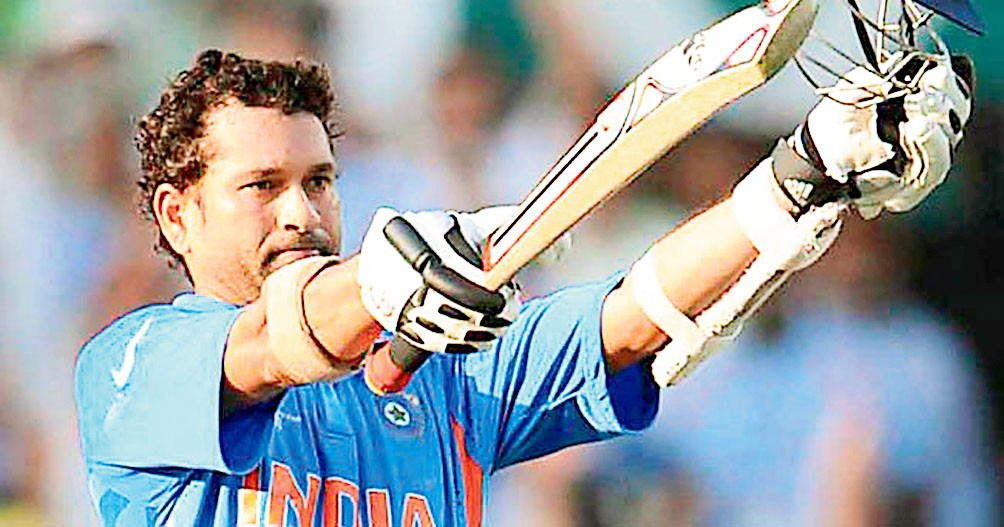

In 1996 I went to a boxing match between Mike Tyson and Evander Holyfield. During the slow days before the fight, a slender, almost ethereal figure floated around Don King’s press area at the back of the MGM Grand Casino. His legs were thin, his hands fine-boned, his face nobly etched but pinched by the years. This was Floyd Patterson, who in 1956 had become the youngest heavyweight champion of the world, a record he had held until Tyson superseded it three decades later. It seemed inconceivable: Floyd was shorter and slighter than me. Mike Tyson was shorter than me too, around Floyd’s height but twice as wide, twice as heavily muscled.
Tyson lost that fight to Holyfield, who was built more like a gymnast than a heavyweight boxer, and who had actually fought most of his career at cruiserweight. Today their successors as champions dwarf them. Tyson and Holyfield were both about 6ft and fought at around 210lbs. The current holder is Wladimir Klitschko, who is 6ft 5in and outweighs both by 40lbs.
I thought of Floyd this week while I was reading David Epstein’s wonderful book The Sports Gene, which explores the roles that genetics and practice play in the lives of elite athletes.
In the early modern era, the "perfect" (male) athlete was still contained within a physique that embodied the classical idyll of Michelangelo’s David and Da Vinci’s Vitruvian Man. Then Epstein writes about a study of the 1968 Olympic Games, in which 1265 competitors from 92 countries had their various measurements and weights taken. The study was anonymous, but it was possible to identify which event each track and field athlete competed in simply by their measurements.
The age of specialisation had begun, and Epstein illuminates it with some extraordinary stats: male swimmers are on average 1.5 inches taller than sprinters but have legs that are half an inch shorter; the average height of elite female gymnasts has shrunk from 5ft 3in to 4ft 9in in the last 30 years; the chances of a 6ft 2in man playing in the NBA are five in a million, but one in six American men over 7ft tall are currently playing pro basketball.
And it doesn’t end with an accident of birth. Research on male professional tennis players ranked in the world’s top 20 showed that not only did the muscles of their racket arms develop differently with use, the racket-side forearm bones grew a quarter of an inch longer than the non-racket arm, while the elbow joint widened by a centimetre.
Epstein is American and his book mentions cricket only tangentially, but the range of sports that his research covers leaves no doubt that such specialisations will ultimately have an impact. It’s easy to see a not so distant future in which squat, muscle-bound sluggers face 6ft 7in giants who can sustain 100mph pace for the required four overs, and yet perhaps even more interesting is why cricket has proved relatively resistant to the change.
Perhaps it is the sheer range of skills that the game contains, and the subtly different ways in which they can be mastered, that help. In boxing or running, a player of, say, 5ft 4in will not compete against another of 6ft 5in, and yet cricket effortlessly matches Tendulkar against Walsh. A sprinter like Brett Lee approaches the crease in the textbook manner of ever-increasing speed, and propels the ball at around the same pace as a broad-shouldered oak like Simon Jones did, who jogged up and found much of his pace from his body action. A genetic fluke like Murali’s arm produced a skill as extraordinary to cricket as Usain Bolt’s combination of height and speed has for sprinting. There is something about the breadth of cricket that resists a particular homogeny.
Then there is the sheer amount of humanity that cricket encompasses. Some sports have become the arena of a particularly well suited, very concentrated genetic line: Jamaica in sprinting, for example, or Iceland in strongman events. Croatia has a disproportionate amount of very tall men.
The diversity of the nations that play the game militates against the same thing happening in cricket – although Epstein is also fascinating on the worldwide "drift" of DNA, in which skin colour plays only a small role. We are all descended from African genes, and yet the DNA of African neighbours can actually be less similar than that shared between people divided by a far greater geography.
DNA is a map of the body that contains 23,000 pages, and each page may change in reaction to the one before it. Some of these small but significant variations offer the base material for specific excellence in sport. Yet cricket is not a sport that drives each of its competitors towards the same very specialist aim. Even within the individual discipline of bowling, for example, vastly different physical types thrive.
It would be revealing to have Epstein dig a little deeper into cricket. Maybe I’ll drop him a line… --Cricinfo